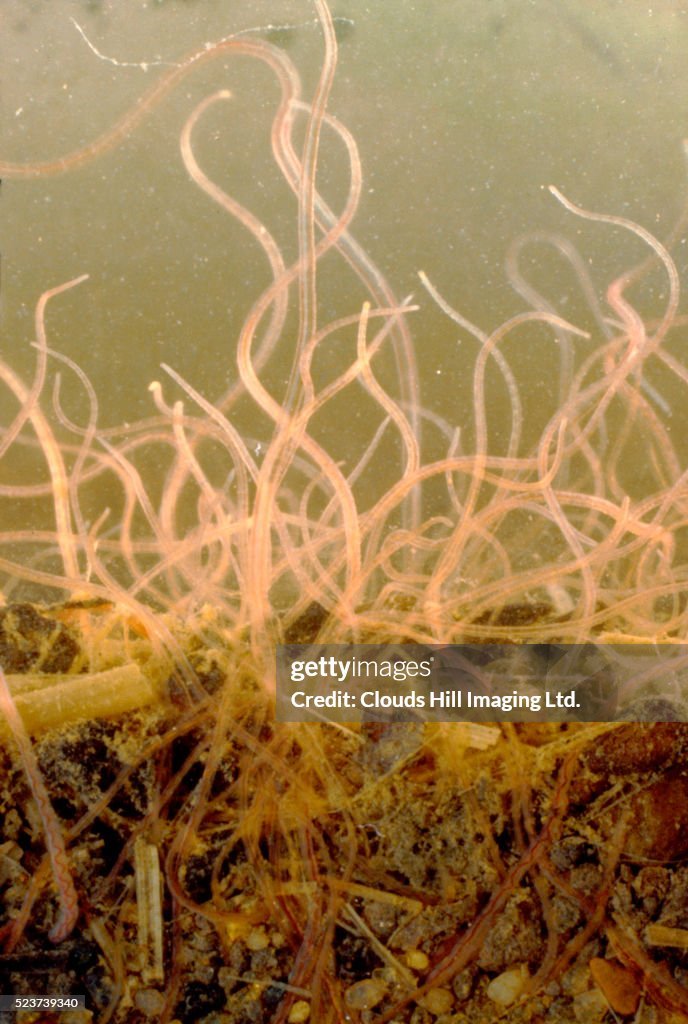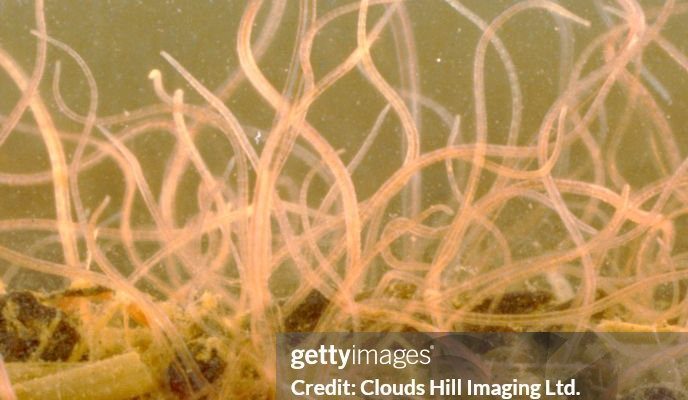
When you picture a tubifex worm, imagine a long, skinny creature wiggling through the mud at the bottom of a lake or stream. They thrive in freshwater and often live in sediments, feasting on decomposing organic material. You might be wondering what makes them so special. Well, their presence indicates a healthy ecosystem. In this article, we’ll dive deeper into the fascinating world of tubifex worms and explore their critical roles in Earth’s ecosystems.
What are Tubifex Worms?
To start, let’s get to know these quirky little creatures better. Tubifex worms belong to the class Oligochaeta, which also includes earthworms. They typically measure between 3 to 10 centimeters long, with a slender, segmented body that’s often colored reddish-brown. Their shape makes them perfectly adapted to slinking through mud and muck, where they can munch on tasty bits of decaying organic matter—basically, they’re like tiny composters!
You might see them during low water levels, wriggling to get to new feeding grounds. They have a unique lifestyle: while some worms live in soil, tubifex worms prefer aquatic environments, often found in the sediments of lakes, ponds, or rivers. Their presence is usually a good sign. If you find them in a body of water, it’s likely that the ecosystem is rich in organic material, which is essential for various aquatic species.
The Role of Tubifex Worms in Soil Health
Now, let’s dig into how tubifex worms contribute to soil health. Just like earthworms, tubifex worms play an essential role in aerating the soil. As they move through the mud, they create tiny tunnels. These tunnels allow air and water to circulate, which is crucial for the survival of plants. Think of it as providing a breathing room for the soil.
Additionally, tubifex worms help break down organic matter. They munch on decaying leaves, algae, and other materials, which helps decompose them into simpler forms. This process enriches the soil with nutrients, making it more fertile and improving plant growth. Without these worms, we would have a buildup of organic waste, which can be harmful to plant life.
Interesting enough, their activity also encourages the growth of beneficial microorganisms. When tubifex worms consume organic materials, they release nutrients back into the soil, creating an environment where helpful bacteria can thrive. This symbiotic relationship promotes a healthy ecosystem that supports a variety of plant and animal life.
How Tubifex Worms Benefit Aquatic Ecosystems
In aquatic ecosystems, tubifex worms are equally important. They act as natural recyclers, breaking down materials that would otherwise accumulate and harm the water quality. By consuming waste and organic debris, they help maintain a balanced and healthy aquatic environment. This role is especially crucial in lakes or ponds, where stagnant water can lead to pollution if left unchecked.
Moreover, tubifex worms serve as a food source for many fish and other aquatic animals. When you think about the food chain, these worms sit right at the bottom, providing sustenance for larger creatures. By supporting the diet of fish and other wildlife, tubifex worms indirectly contribute to the health of the entire aquatic ecosystem.
When fish and other creatures feast on tubifex worms, it helps maintain their populations and health, which in turn supports local fishing communities and ecosystems. It’s like a hidden web of life that keeps everything interconnected.
The Environmental Indicators
One fascinating aspect of tubifex worms is that they can serve as indicators of environmental health. Because they thrive in clean, nutrient-rich environments, a healthy population of tubifex worms often signals a balanced ecosystem. Conversely, if their numbers drop significantly, it can indicate pollution or other stressors affecting the aquatic ecosystem.
Scientists and ecologists often monitor tubifex worm populations to understand the overall health of a body of water. Their presence or absence can lead to vital insights regarding water quality, habitat stability, and the presence of other species. Think of them as little canaries in the coal mine for aquatic ecosystems!
If you’re ever near a body of water and spot these worms, take a moment to appreciate the role they play. Their health is tied to the ecosystem’s overall well-being, making them an essential part of the environment.
How Tubifex Worms Adapt to Their Environments
Tubifex worms are masters of adaptation. They’ve evolved to thrive in various conditions, from clean rivers to cloudy ponds. One of their unique survival strategies is their ability to tolerate low-oxygen environments. In habitats where oxygen levels drop, such as stagnant water, tubifex worms can switch to anaerobic respiration, allowing them to survive in conditions that would be deadly for many other organisms.
This adaptability is crucial for their survival in changing environments. They can survive toxic conditions by entering a dormant state when pollutants or harsh circumstances occur. This ability allows them to bounce back once the ecosystem stabilizes, serving as a testament to their resilience.
Their adaptability doesn’t just help them survive; it also enhances the ecosystems where they live. When conditions improve, their populations can quickly rebound, contributing to nutrient cycling and aquatic life supports.
So, the next time you think about soil health or clean water, remember the humble tubifex worm. These little creatures may not make headlines, but they play a vital role in keeping our ecosystems balanced and healthy. From enriching the soil to serving as food for aquatic life, their contributions are countless and critical.
By understanding the importance of tubifex worms, we can appreciate the intricacies of our ecosystems and the interconnectedness of life. So, whether you’re an avid nature enthusiast or just someone who enjoys a stroll by the water, take a moment to recognize these unsung heroes. They may be small, but their impact is immense!

